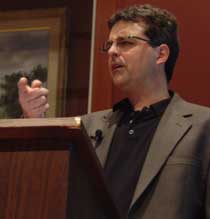For years Madison Avenue's leading thinkers have pondered the same fundamental question: How much of their advertising actually works? In what is likely the grandest post-buy analysis of all time, the Advertising Research Foundation this week will release findings of a review of more than a dozen of the most sophisticated cross-media case studies ever conducted. Its conclusion: About $50 billion in U.S. ad spending is "wasted." That figure equates to about 18.8 percent of the $266 billion in U.S. ad spending estimated by Universal McCann for 2004, but the precise number isn't as important as the fact that the ad industry now claims to have identified some of its biggest and most obvious areas of waste.
Advertising sales at alt-weeklies varied from region to region during the first half of 2004, in large part following the path of the spotty economic recovery. Happily, the second quarter of the year was an improvement over the first, both for national sales overall and for local sales at selected alt-weeklies. Freelance writer John Ferri reports for AAN News on the state of the business.
Alternative newsweeklies have what it takes to attract online advertising. They're highly local. They have a young, tech-savvy readership. But the papers are still in the Dark Ages when it comes to Internet advertising, says ad sales consultant Mike Blinder (pictured), who will speak at the AAN convention in San Antonio in June. He and other experts urge the industry to follow the lead of some of the larger AAN papers and make their Web strategies more cutting-edge.
Potential advertisers in alternative newsweeklies want to know not only how many people their promotions will reach but what types of people. How old? How educated? How rich? To supply answers, publishers of AAN papers rely on firms that do market comparisons and readership surveys. But, sometimes, research techniques don't quite deliver what publishers are looking for.
Two of the main rep firms for alternative newsweeklies had significant gains in national advertising in 2003, E&P reports following an announcement by AAN today. The Ruxton Group, which represents 28 newsweeklies, experienced a 17 percent increase over 2002. Alternative Weekly Network, which represents more than 100 newsweeklies, had a 6 percent increase in national sales over 2002.
If the economy is reviving, many AAN papers are still waiting for the signs to show up in their ad revenues. Although national ad sales went up last year, papers reported mixed results in local advertising, their mainstay. Reasons to be hopeful in 2004 include increases in real estate and recruitment ads, diversification of ad categories, and the notion that merchants and the public have grown tired of brooding and want to feel optimistic about their economic prospects again. Sales staff need to "get the message out there" about what alternative newsweeklies have to offer, says Jim Wolf, Village Voice Media's vice president of national advertising.
Breaking with the long tradition of producing separate versions of ads for the Hispanic and non-Hispanic U.S. markets, a number of top advertisers such as Coca-Cola Co. and Volkswagen are using a single Spanish-language ad for all markets.
Payments to access personals and dating; business and investment; and entertainment and lifestyles categories accounted for 65% of all online content buying in the first half. That was up from 61% a year ago.
An ad for the prescription drug Zoloft asks: "Feeling sad? Anxious? Tired?" Zoloft is sold by Pfizer as a treatment for depression and other disorders. It is but one of many print and broadcast advertisements that pitch prescription drugs directly to consumers - a category of ads scrutinized last week at a hearing held by the Food and Drug Administration.



